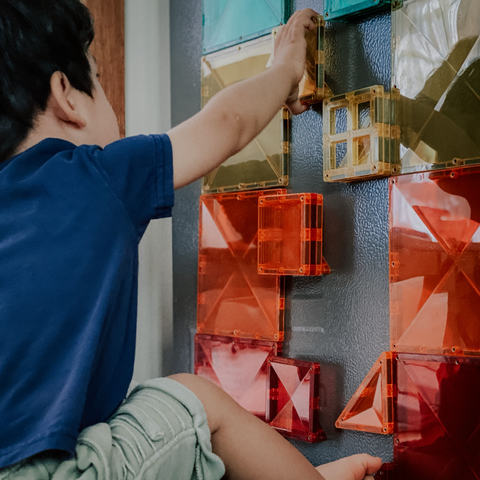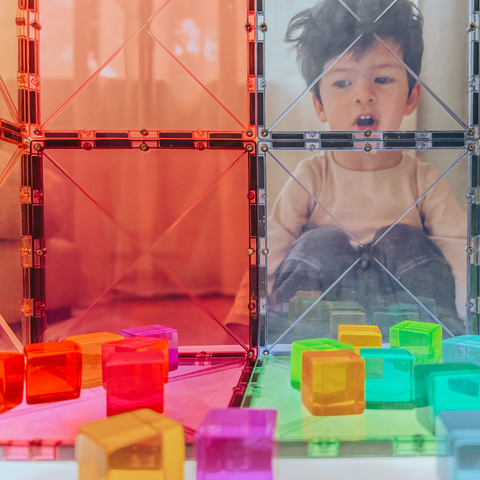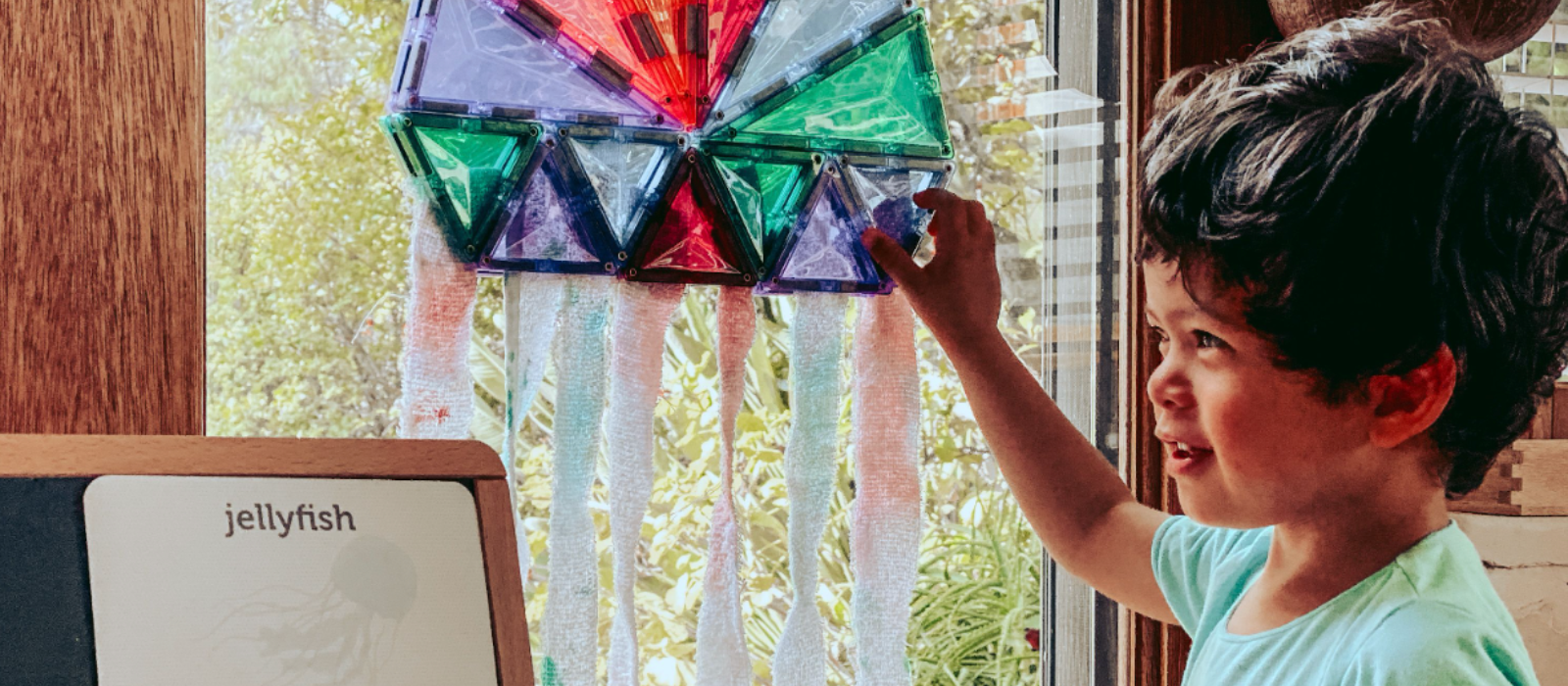Magnetic tiles have become a popular toy among children, offering endless opportunities for open-ended play and exploration. In this blog, we'll take a look at some of the key benefits of magnetic tiles and how they can support children's development.
-
Encouraging creativity and imagination: Magnetic tiles provide an open-ended platform for children to build structures and objects based on their own ideas and designs. This allows children to express their creativity and imagination in a hands-on way, and to experiment with different shapes, patterns, and designs.

-
Developing fine motor skills: Using magnetic tiles requires precise hand movements, which helps children to develop fine motor skills and hand-eye coordination. This is important for a range of activities, from writing and drawing, to tying shoes and playing musical instruments. More specifically Magnetic tiles help to develop fine motor skills in the following ways:
-
Hand-Eye Coordination: Using magnetic tiles requires precise hand movements, which helps to develop hand-eye coordination. Children must manipulate the tiles to connect and build structures, which requires careful and precise movements.
-
Strength and Dexterity: Building with magnetic tiles requires the use of small muscle groups in the hands, fingers, and wrists, which helps to improve dexterity and strength. This is especially important for developing the fine motor skills needed for tasks such as writing, drawing, and using tools.
-
Problem-Solving: Magnetic tiles offer a challenging and engaging way to build structures and objects, which requires children to problem-solve and manipulate the tiles in different ways. This helps to develop fine motor skills, as well as critical thinking and problem-solving abilities.
-
Bilateral Coordination: Magnetic tiles can be used to build structures that require the use of both hands, which helps to develop bilateral coordination. This is the ability to use both hands together in a coordinated and controlled manner, which is important for many everyday tasks.
-
-
The use of Magnetic Tiles also improves spatial reasoning: Building with magnetic tiles requires children to think about shapes, symmetry, and balance, which helps to develop their spatial reasoning skills. This is an important cognitive ability that supports a wide range of STEM (science, technology, engineering, and mathematics) disciplines.

-
Introducing STEM concepts: Magnetic tiles can be used to demonstrate basic principles of science, technology, engineering, and mathematics. For example, children can learn about magnets, geometric shapes, and simple machines through play.
-
Fostering teamwork and collaboration: Magnetic tiles can be used in group settings, encouraging children to work together, communicate, and share ideas. This helps to develop social skills, including cooperation, communication, and conflict resolution, which are important for success in both personal and professional relationships.

-
Supporting learning and education: Magnetic tiles can be used to support learning and education in a wide range of subjects, including math, science, and engineering. For example, children can use magnetic tiles to practice counting, measurement, and spatial reasoning.




